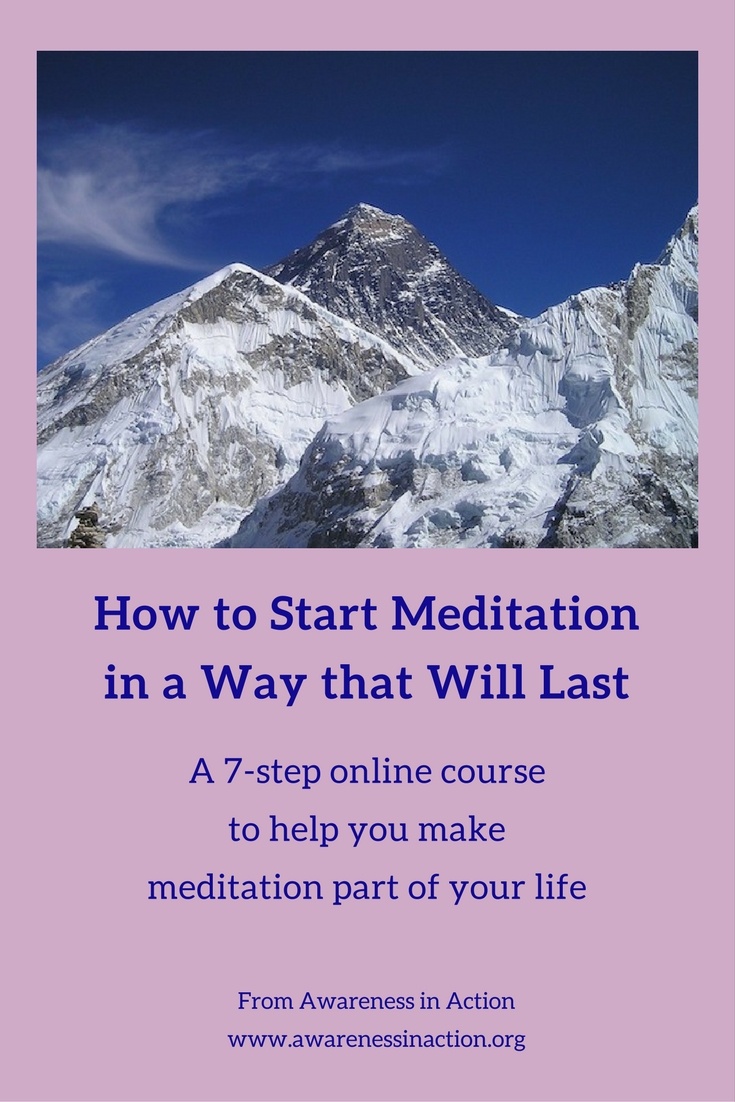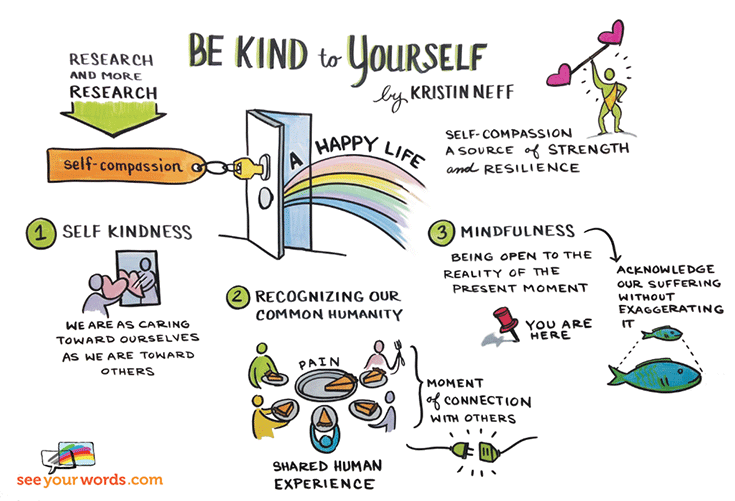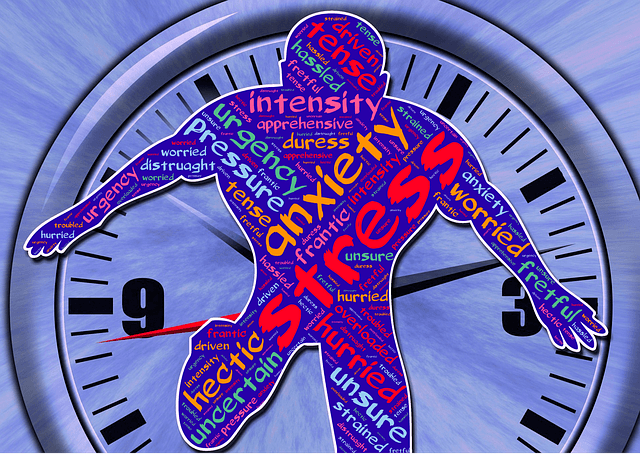
by Maureen Cooper | Feb 26, 2018 | Meditation, Scientific research, Yourself
Emotional by nature
If you are interested in astrology, then you will know that for those of us born under the sign of the crab, much of our interaction with the world is carried out through the currency of emotions. Even if you are not interested, as a Cancerian, I can tell you it is true. As a child I remember being overwhelmed by the range and power of my emotions. One minute I could be blissed out with happiness and then minutes later, plunged into a vortex of sadness. I was my parents’ first child and they were not at sure what to do with the emotional rollercoaster I seemed to live on.
An early memory
I have a painful memory of being in school and something—I don’t remember what—going badly wrong in the classroom, and me ending up in the cloakrooms, locked in a cubicle and howling with rage and anguish. I was in those early stages of puberty, when everything is already heightened to an almost unbearable degree. A teacher came to find me and to insist I get control of myself—she didn’t offer any advice as to how to do that. The school rang my mother and when I got home, I got a major lecture of the importance of growing up, being responsible—and yes, learning to control my emotions.
The thing is that until I came across meditation, I never found anyone who could give me meaningful advice on how my emotions worked, why I was more emotional than my sisters (a Gemini and a Taurean), and how to deal with them beyond learning to control them—which I came to understand, meant supress them. When the emotions were positive, things were intense but manageable but when negative emotions got the upper hand, I felt helpless and totally at their mercy.
Neuroscience and emotion
With the developments in neuroscience, we can understand more about the relationship between the brain and our emotions. Richard Davidson, a leading neuroscientist and pioneer in research into the effects of meditation on the brain, has developed his own system of six emotional styles. He claims that it is these emotional styles, rather than our passing emotional reactions, that shape the way we interact with the world. Furthermore, by understanding our personal emotional style, we can learn where we are the most vulnerable in terms of how we respond, and gradually earn to try new approaches.
Meditation and emotions
Meditation is a sustainable way of doing just that. When we work with our emotional responses in meditation we can come to see that there is nothing problematic with the emotion itself—in fact, it is just energy and a natural part of life. When an emotion is triggered it rises, lasts for a few seconds and fades away. It is our on-going stories—our prejudices, our habits, our longings that cause us to go back and rekindle the emotion and replay it over and over again. We want to hold our ground, and to make things real and solid, so we use our emotions to back us up. Meditation helps us to view this parade of reactions without hope and fear—just to acknowledge what is happening and then let it go.
This is important because when we are in the grip of strong emotions we might think we are establishing a position, but it is built on an insecure foundation. In 2005 Dalai Lama attended a conference in Gotenborg, where he met Dr. Aaron Beck, the founder of Cognitive Behaviour Therapy (CBT). During their conversation they struck up a great rapport and shared insights that showed similarities between Beck’s work and Buddhism. The Dalai Lama was particularly struck by Beck’s assertion that according to CBT, when a person is angry 90% of their reaction is an exaggeration and a projection. People talk about ‘seeing red’ when they are angry. Perhaps this is a colloquial way of realising the truth of this research.
A story of emotions
I had an experience when I was out and about in Amsterdam recently that reminded me of this. After a long bout of ‘flu, my partner and I were enjoying a trip into town for dinner and a movie. He went ahead to collect the cinema tickets and I made my way to the restaurant. As someone who has rheumatoid arthritis, when I get tired my walking can get a bit unsteady. I came to a road junction and checked that it was all clear and began to step out into the road, when along the cycle track sped a young man on a scooter, with his girlfriend riding on the back. He saw me at the edge of the pavement and deliberating aimed his scooter towards me, making me wobble uncomfortably. He was delighted with my reaction and made a sort of ‘Ohhhh, ohhhh, ohhh!’ noise which he felt summed up my response.
He sped off laughing loudly, while I teetered on the edge of the pavement feeling a mixture of embarrassment, resentment and shame. For a few moments I could only stand there but then I glanced up and just caught a glimpse of the girlfriend looking back at me. Her expression was concerned and a little embarrassed as well. It helped to bring me back. Instead of feeling abused, and sorry for myself, my attention went to the guy driving the scooter. It was a Saturday afternoon, he had a girl to impress and a chance to show his skill with the bike—after all, he never came near to hitting me.
A quote from Taking the Leap by Pema Chodron
……when the whole thing is just not working and we don’t know what to do, this is the time when the natural warmth of tenderness, the warmth of empathy and kindness, are just waiting to be uncovered, just waiting to be embraced.
The whole incident brought to mind this quote from Pema Chodron. I had been on the verge of giving into a rush of emotion, which would have not shown me anything at all and certainly would not have helped the situation. The expression on the girl’s face acted as a reminder of how emotions work, which enabled me to turn the moment into a feeling of tenderness to the boy, trying so hard to be cool. The incident has come to mind several times since it happened. The line between realizing what is going on with an emotion and being swept away by it can be very thin. Fortunately, in this situation my own vulnerability acted as a support for seeing vulnerability in the one who was triggering my emotion and I could drop the rest of the story.
Hello there!
If you find this post helpful and would like to know more about meditation, you could try this online course


by Maureen Cooper | Nov 23, 2017 | Kindness, Meditation, Mindfulness, Work
The Changing Face of Work
At the height of his career my father occupied a senior position in a local government architectural department. He had a large team that he was responsible for and had to conduct delicate negotiations with councillors and politicians. In spite of his heavy workload my memories are of him coming home for an early dinner every evening. We had uninterrupted weekends and the regular round of holidays during which—because this was pre-technology—he was never pulled away by emails, texts, or reports to finish on his laptop. His work life balance was never in question.
Few of us would recognize such a working environment nowadays. For most of us technology has helped to break down the barriers between work and home. We can work on stuff from home and look for friends and partners at work. We don’t expect to keep one job for life—moving along a predictable career path does not feature as a realistic goal in today’s more fragile economy. Perhaps most important of all, we long for a sense of meaning and purpose at work—a feeling that with our work we can make a real contribution. Daniel Pink in his book, Drive: The surprising truth about what motivates us reveals that the idea that we work primarily for money is a fallacy. Of course, most of us need to earn a living but we are also motivated by the need to direct our own lives, to learn and create new things and to do better for ourselves and for the world. Belinda Parmar in her book, The Empathy Era backs this up with this statement,
69% of Millennials said they would work for less money at a company whose culture and values they admired.
Challenges to finding a good work life balance
However, this goal is not one that is always fulfilled for people. In his book, How to find fulfilling work, Roman Krnaric writes,
Most surveys in the West reveal that at least half the workforce are unhappy in their jobs. One cross-European study showed that 60% of workers would choose a different career if they could start again.
An article in the Irish Examiner last autumn stated that 82% of Irish workers are experiencing stress at work.
The thing is that the brain interprets the workplace primarily as a social system. This means that it responds to work events with corresponding threat and reward dynamics—a clash with your boss will feel as important to the brain as the need to find food and water. Social pain is processed in the brain in the same way as physical pain, so threats to our status, security and wellbeing at work trigger the same circuits in the brain as threats to our physical safety.
A carrot and stick work environment will enhance this threat response leading to high levels of stress, whereas being treated fairly, feeling that work is meaningful and that one’s contribution is valued will help reduce stress and lead to a more harmonious, productive work environment. A stressful working environment will close down creative possibilities in the mind and have corresponding effects on output.
What are the qualities of a workplace that values wellness?

A work environment that provides good standards of wellbeing is more likely to be made up of people who are more loyal, more productive and provide better customer satisfaction. It is an outdated view that holds that staff wellbeing is an optional extra.
A recent report published by the New Economics Forum, identified five elements that are fundamental to wellness in the workplace.
-
A healthy work life balance
People want to work hard but not excessively so. Those working more than 35-55 hours a week tend to experience higher levels of stress.
-
Staff feel their skills are used and acknowledged
People want to contribute according to their level of expertize and to feel they are developing in their jobs. Feeling under-used is a potential source of stress.
-
People experience some degree of control in their jobs
Few people welcome being micro-managed and want to establish relationships of trust with their managers in order to enjoy a degree of autonomy at work. When this is not present, then stress levels rise.
-
Healthy work relationships
Workers want to have relationships at work that are supportive, respectful and understand mistakes, while avoiding blame. The impact of positive working relationships can be more influential in job satisfaction that an increase in pay.
-
Fair pay
After a certain level of remuneration, the benefits to wellbeing decrease but if income falls below a basic level then levels of job satisfaction decrease accordingly.
When these factors are in place, the workplace is more productive, efficient and happy place to work. Employees are less stressed and more satisfied with their jobs. They experience more loyalty and engagement and staff turnover is lower.
How meditation and compassion help in establishing good work life balance

Research conducted at Harvard University in 2010 found that for 46.9% of our waking lives we are thinking about something different from what we are doing and that this mind wandering does not make us happy. This means that for more than half of our time at work we are operating on a kind of automatic pilot and we are not fully present to our own experience or to the people around us. Meditation has been practiced in the Buddhist tradition for more than two thousand years but within the last twenty years research from neuroscientists is providing a foundation for what practitioners of meditation already know—it helps us to develop our attention and to become more present.
When we are able to stay present rather than ruminating on what might or might not happen if we take this or that action, we free up a lot of our energy and attention that would otherwise be caught up in anxiety and stress. We have the capacity to listen to other people without running a commentary in our minds that overshadows what they are wanting to communicate to us. We can manage our own emotions and moods more effectively because we can see more clearly what we are doing. From there it is a natural development to manage relationships with others with more openness and tolerance and less criticism and judgement.

Psychology professor, Jonathan Haidt has coined the term ‘elevation’ to describe the ripple effects of acts of kindness. We do not need to be involved in the action ourselves but simply by witnessing a person perform a kindness for another we experience an uplifting feeling, which makes us feel good. Applied to the workplace actively developing kindness and compassion helps to spread an attitude of service and commitment among staff. As they learn to care for themselves with compassion they extend that heightened understanding to others.
As with meditation, a compassionate working environment is likely to encourage staff to stay in their post, to need less sick leave and experience a reduction in stress.
What can we do as individual employees?

The great news is that meditation and compassion are trainable skills. We can learn to work with our thoughts and emotions in order to achieve a higher degree of wellness at work. The big take-home message from neuroscience our that our brains change according to our experience. As we start to train ourselves in meditation and compassion our brains gradually change to support our new habits.
As we saw earlier, having a sense of being in control at work is a very important factor in wellness and yet for so many of us this seems out of our reach. So much of what we do at work is in response to directives we don’t always agree with, for people with whom we feel we have little in common. The answer here is to learn to take control of ourselves in a fresh and meaningful way. We can pay attention to how we draw on our own strengths, skills and experience. Through training in meditation and compassion we can take control of how we react to any situation—whether it is one we like, or one we have trouble with. We can learn to view our work colleagues in a new light and try giving them the benefit of the doubt rather than feeling frustrated and stressed.
At the heart of it all is learning to view ourselves with kindness and compassion. Instead of demanding an unreachable level of perfection from ourselves we can learn to work with our imperfections and vulnerabilities with mindfulness and kindness. This gives us a stable foundation from which to reach out to other people in the same way.


Hello there!
If you found this blog useful, you could try this online course
9 Ways to Work Better with your Work Frustration
You can find out more here

by Maureen Cooper | Sep 13, 2017 | Compassion, Kindness, Meditation, Mindfulness, Relationships, Self-compassion, Stress, Yourself
Are you familiar with the growing popularity of online courses? If you know where to look it is now possible to find a tantalizing variety of learning offered in the form of online courses. Art classes, cookery sessions, language instruction, and all manner of lifestyle topics are now on offer online. It’s an amazing resource!
This year in Awareness in Action we have been delighted to offer our own series of online courses on the topics of self-compassion, working with stress and sustaining your meditation practice. We have several more exciting ideas in the pipeline.
My own exposure to online courses started a few years back when I was asked to facilitate a series of course programmes run by a meditation group in the States. I was immediately sold on the idea when I connected with the people taking the courses and the degree of passion and commitment they brought to their learning. It was this energy that we aim to bring to our own courses in Awareness in Action.
If you have never taken an online course you might have all kinds of assumptions about how they work and how much time they need. In this blog post I want to spell out six inspiring reasons why taking an online course could really work for you—while at the same time being upfront about when they won’t!
Reason 1: the high degree of personal attention each participant receives
We all know how it can be difficult to be heard in a large workshop, where the most confident and articulate people all too easily get the lion’s share of attention. This is not the case with an online course. Each person gets to send in their comments and postings and the facilitator answers each one individually and in depth. When the course facilitator is an expert in their field, this means that every posting becomes a 1-2-1 exchange in which the participant can benefit first-hand from the person who has the answers to their issues. With our courses, you can book SKYPE sessions as an extra if you want to go deeper.
Reason 2: online courses are so accessible
Taking part in an evening class can be a great experience but inevitably there comes an evening when it’s raining, you’ve had a rotten day at work and you just want to go home and have a hot, relaxing bath. Once you’ve missed one session it’s harder to turn up the next week and your participation starts to come unstuck.
This problem simply does not exist with online courses. If you have a good internet connection and a reliable device you can access your course anytime and anywhere. Even if you have to take a work trip, you can still work on your assignment.
Reason 3: online courses help to improve your resumé
Given the fluid nature of the current job market it’s more important than ever to show that you are interested in developing skills that will help you do your job well. The scope of online courses is widening every day and there are many topics to choose from. Even if a course does not include a certificate of completion you can request one at the end of the course and the facilitator will put one together for you that you can include on your cv. This applies equally to younger employees starting out on their career as well as experienced people who want to demonstrate that they wish to keep learning and up-to-date.
Reason 4: being part of a dedicated online community
At the beginning of this piece I mentioned how inspiring I had found it to work with groups of students on online courses. I know of people who have ‘met’ on an online course and arranged to go on to to others so they can stay together as a group. Even now, I am still in touch with people who I have never actually met but who have taken several courses with me.
When you join an online course you have the option to become part of a dedicated group of like-minded people who are interested in some of the things you are interested in. The possibilities for an exchange of views and experiences are endless.
In addition, an online community can act as a support to your individual learning. It’s reassuring to share struggles and insights with people going through the same programme as you are.
Reason 5: online courses are designed to fit into your life
We are all busy people, so we need our learning to come in short, practical modules in order to be able to fit it into our already over-packed schedules.
In Awareness in Action courses, each course is divided into topics and each topic becomes a lesson. However, we go further and break down each lesson into a series of activities, which give the details of each topic. We advise between one and a half and two hours for a lesson. If you find you don’t have that much time to sit with the course in one go, then you have the option to cover a number of activities depending on the time you have available. In that way, you can keep the thread of the course and progress at your own pace.
Reason 6: online courses are great value for money
Given all this, plus the fact that for many online courses you have access to the materials for as long as you wish, their cost is manageable for a wide range of potential participants. Most courses offer a basic fee, with bonuses for early bird sign up. If you want individual coaching you have the option to sign up for more elaborate packages that include these options.
….. and four things to avoid
Anyone wanting to create a vibrant, enthusiastic online course following is only interested in their participants being inspired, and satisfied by their online experience. Over the least year I have seen a few ways in which people can inadvertently undermine their online experience and end up feeling disappointed. Here are four of them.
-
Avoid signing up when you are about to be extra busy
It’s tempting when you see a course that feels just right for you and you just want to get started—you just want to jump right in and sign up. My advice is to take a moment to check your schedule and make sure this is the right time for you to start a course. If you are about to go on a major work trip, or have a baby, or support your kids through their GCSEs then it might be good to wait until the next time the course is offered. Most courses are offered two, or even three times a year. We might think that we can fit in a few minutes of course time in between—and in the general run of a busy life you can—but when it is something major, you will just be too absorbed in what you have to do. The course will fade to a vague feeling of guilt and fizzle out and that’s a pity.
-
Avoid signing up if you are in crisis
Another time to double check is if you are going through a challenging time. Perhaps you are under a lot of pressure at work and think that a course on mindfulness in the workplace is just what you need. Or you have been involved in a big run-in with your boss and you want to take a course on self-compassion to help you regain your equilibrium. If you are ready, then that is fine and the course could help you get through what you are dealing with in a constructive way. Just check that you are not still too involved in the challenge and having to give a lot of energy to managing it. The risk here is that course will come to seem like a possible lifeline that you are just too stressed and worried to access. Then you will have a wistful sense that you have lost out again and this will add to your sense of crisis.
-
Avoid riding on someone else’s inspiration
Last January one of my courses was advertised at a New Year’s Meditation retreat and I was delighted to see several people sign up. Just as the date for registration passed I received an urgent email from someone who had just got home from the retreat and wanted to sign up with her friends, ‘to keep the inspiration going’ she said. Wanting to help I made the necessary changes to the registration process and she signed up for one of the more expensive coaching options. She managed the first few lessons and one of her allocated Skype sessions but then it was time to go back to work. In spite of my best efforts to keep her connected and to allow her extra time to work with the materials her participation became more sporadic and soon fell away altogether.
I realized that she had been caught up in the enthusiasm of the retreat group for the online course and had not really made her own choice to commit to the material. It’s a shame, because she will be much less enthusiastic to sign up for another course after this experience.
-
Avoid signing up for more than one course at a time
Occasionally I come across what I call a ‘professional course-taker’—someone who signs up for everything you have on offer and then does not complete anything fully. This type of person might also have signed up for your courses and courses from other providers at the same time. It’s wonderful to have so much enthusiasm but generally it is hard to convert into quality learning on any of the chosen courses. As has already been said—most course programmes run tow or three times a year, so there is plenty of time to cover all the ground that you wish to cover.
Perhaps some of you reading this blog have already got experience of taking online courses. If so, it would be great to hear how you benefitted and if you have any more ‘things to avoid’ to add to my list. Do be in touch and share your experience.

If you are interested to try an online course, we have a meditation course for beginners running continuously—How To Start Meditation in a Way That Will Last.
You can sign up any time. The link is here

by Maureen Cooper | Jul 29, 2017 | Compassion, Kindness, Meditation, Mindfulness, Relationships, Yourself
A few weeks ago, my partner and I were out with some friends for dinner. We had not seen them for a while and we had a lot to talk about. On top of that, one of the friends was going through a bit of a tough time and needed support—which we happy to give, except that the people at the table behind us were celebrating and extremely noisy. It was one of those weird situations where you found yourself raising your voice to talk about delicate things. I found myself beginning to experience what I can only describe as ‘restaurant rage’.
I was focused on our small group at our table and found myself glancing over my shoulder in increasing irritation at the thoughtlessness of the noisy crowd behind me. It seemed to be that they were inconsiderate and thoughtless, with no care for the enjoyment of the other diners.
Eventually, after a while, a sense of doubt set in. How was my behaviour any different? I wanted things quiet and peaceful so my friends and I could have the environment we wanted. The celebrators wanted to have a good time. I wanted things one way and they wanted them another. Why did I assume that my way was best? Why did I feel entitled to it?
It got me thinking about how our default position is so often to want others to change to fit in with how we want things to be. It is so much harder to change our own behaviour to be able to manage the challenging situation more effectively.
What follows are my ideas about how to manage a situation like this next time it comes up. I live in a city; noisy restaurants are common—so turning restaurant rage into kindness seems like a good investment.
Take care of your irritation
If you are going to change the way you are reacting you need to give yourself some time to realise you are irritated and then to calm down. I usually find a few long, slow breaths will do it. No-one needs to notice—you can just rest your attention on your breath for a few moments until you feel yourself coming back.
The next thing is to get a handle on what is actually happening, rather than what you imagine is happening. In my dinner example, the party at the nearby table were not nasty people on a mission to spoil my evening—there just wanted to enjoy themselves.
With this perspective, it’s easier to remember that it’s not all about you. You have the right to want things to go the way you wish but then so does everyone else. Sometimes things go your way, sometimes they go another person’s way. There’s not a lot we can do to change that and getting irritated about it just makes you miserable.
Pay attention to the sound without the storyline
It’s possible to use sound as a support for meditation. Of course, if you are in a restaurant you might not want to go off into a corner for a meditation session but you can still use the principle. Just notice the sounds around you, without judging and without building a storyline about them. You could call it a Teflon relation to sound—just notice it with your full attention but without commentary. Going back again to my restaurant example—I immediately made a story about my friend and I needing quiet and the people nearby ruining it with their noise. Thinking back, it’s quite likely they were not even particularly aware of us.
We relate to the world through our senses but we do have a choice as to how we are with the information they provide. We don’t always have to react.
If you find it hard to make meditation a regular part of your life, remember that yoga can also help you to find some inner peace. Yoga is a way to relax, unwind, and become one with everything around you. It can help you to develop resilience in the same way that meditation can.
Enjoy other people’s pleasure
When you get annoyed with the behaviour of other people your stress levels rise and you feel uncomfortable. In the restaurant, I could feel myself getting tight with trying to block out the noisy table.
A totally different approach is to notice joy when it is happening around you and to allow it to nourish you.
This might involve dropping your own agenda and simply opening to the enjoyment of others. It could mean that instead of protecting yourself, you allow yourself to open to the happiness of other people. It does not have to be your happiness but it can lift your heart just the same.
Always wish them well
The last of these remedies for restaurant rage is wishing people wellbeing and happiness. You may have heard of Loving Kindness Meditation. It’s a meditation focused on wishing happiness and wellbeing for yourself, for people close to you, for people you do not know so well and even for people you find challenging.
Even if you are not familiar with the whole meditation, you can still focus on a person, or group of people and in your mind, say something like, May you be happy, may you be well. I find it a great exercise to do when I am in crowded places and there are many people. It brings me a feeling of ease.
Do you have any tips for turning rage into kindness in city life? If you do please add them in the comments section.

by Maureen Cooper | Jan 3, 2017 | Holidays, Meditation, Yourself
When the moment finally arrives that you simply cannot justify keeping up the Christmas tree any longer and you have to admit that the holiday is really over does your heart sink a bit? All the pleasure of shared company, exchanging presents and delicious food that filled the holiday season seems a bit remote as we strip off the decorations and pack them away. Everyone’s back at work and winter seems to stretch ahead endlessly. Spring feels like a remote possibility as we battle through the cold and wet. It’s all too easy to feel rather gloomy.
What can we do to pick ourselves up?
Here’s a few ideas—maybe you have some you could suggest also?
Let our Christmas holiday nourish us
First of all, we can let our holiday high nourish us rather than fading away leaving us looking for the next lift. We can allow ourselves to have a sense of appreciation and gratitude for all we got to do over the holidays and take a moment to celebrate that we had this opportunity to take a break and enjoy some fun.
Of course, nothing lasts forever and we know that after the holidays we have to pick up the threads of work and so on but instead of feeling sour about it, we can pick them up with a sense of refreshment and relaxation. We can feel energized for whatever comes next.
Be extra vigilant in keeping up a meditation schedule
Perhaps this time of year is difficult because it shows up our habit of holding on to the things we like—holidays—and pushing away the things we don’t want—our working routine. This can cause us a lot of dissatisfaction because inevitably we have to deal with all kinds of stuff we don’t want and don’t like.
Meditation is the best way to help train our minds to be able to hold steady in the middle of the ups and downs of life. As we sit and watch the breath we can go through all kinds of experiences that we find uncomfortable. By the very act of sitting through these experiences and not running away from them we are training ourselves to be less reactive and less likely to panic whatever comes our way.
Find acceptance in each moment
Accepting what comes along is not a passive thing to do. It takes patience, understanding and a generous helping of wisdom. It also does not mean we have to lie down in the face of difficulties, or become a doormat. Accepting what comes to you in a way of seeing clearly what is going on in our life, in the present moment. We are not struggling to hold on to it, or push it away. We’re not wishing things were different from how they are. We are bringing our full resources to working with what comes up in each present moment.
This can provide us with a lot of space and possibilities. It can be energizing, instead of exhausting.
We shake our heads in disbelief when we see the stores getting ready for the next season. We’ll be amazed when we see Easter eggs popping up all over the place before too long. Valentines Day preparations are already in full swing. All this is a response to our habit of chasing happiness and running away from discomfort and boredom. Inevitably it makes the habit worse. We get on to a cycle of looking forward to the next good thing and missing so much of the texture and opportunity of where we are at each passing moment.
It’s a good time of year to get back on the cushion.
What do you do to shake off the holidays blues? I would love to hear.

by Maureen Cooper | Sep 15, 2016 | Holidays, Meditation, Self-compassion, Yourself
Many of us have returned from our summer break by now and are back into the swing of our working lives. My partner and I just got home from attending our usual annual retreat in Lerab Ling, a Tibetan Buddhist centre near Montpellier in the South of France. We have a tiny cottage in the forest where we stay during our retreat time. It is our opportunity to enjoy some quiet time in nature, while receiving meditation instruction to nourish us throughout the year.
We drive there from Amsterdam and our arrival is always a sensitive time. We are tired from the preparations to leave and the long journey. We know we have a lot to do to set up the cottage for our stay and, as it is remote, we have no idea what we will find when we open the door.

Not how you want to begin a holiday
This year was a shock. When we went to the room where we sleep we saw that the skylight had leaked through and damaged the area around the window. To make matters worse, this has been an on-going problem, which we thought it was all fixed and done with. When you are on retreat in another country in August and you need to arrange work to be done it can be a big hassle. My heart fell and I felt pretty fed up. Thoughts like, ‘I don’t need this’ and ‘Why can’t things just go smoothly for a change?’ chased each other through my mind. I felt pretty sorry for myself.
This is where meditation kicks in for me and I really see how much it matters in my life. Negative emotions can still come but they do not bite like they used to. They don’t get a hold on me and define my behaviour. Even while I am feeling miserable there is a part of me that knows that it won’t last, that I am not going to feel this way for ever. There is a fundamental part of me that accepts that life has its ups and downs and difficult things will certainly happen, so I am not as surprised as I used to be when things don’t go as I want.
We can think that as meditators we should be able to manage our emotions perfectly but that can just be another way of putting ourselves down. Of course, the more skilfully we can manage our emotions the better but meditation is not an instant cure-all and we can celebrate the steps we take as we go along. Developing a sense of perspective and learning—however slowly—not to take things too personally are two of these important steps. It helps build confidence in meditation to be able to see that although your mind can still get pretty intense, some things are a little easier.

The sky and the clouds
One of the most helpful images I know of to help build confidence in meditation is the example of the sky and the clouds. The sky represents our natural state of openness, spaciousness and wellbeing—our natural mind if you like. The clouds are the thoughts and emotions that pass across our minds. Thoughts do not spoil the mind, or leave any lasting impression—they simply come and go, like clouds. As we become more familiar with meditation we can begin to experience that for ourselves and get a different take on how to handle things going wrong. It becomes more possible to accept things as they are, rather than wishing them to be different and even to develop a certain sense of humour about the craziness of it all.
We are talking about building mental resilience—the ability to overcome obstacles and recover from hard times. It means having a place of inner peace that is always available to us and that helps us to work with how we see things. It enables us to face change and difficulties as opportunities for growth, rather than simply to view them as threats. Not surprisingly, Richard Davidson places resilience as one of the four skills of wellbeing. We know from neuroplasticity that the brain can change according to experience. The experience of meditation will help to develop activity in the pre-frontal cortex, which in turn helps to calm the fight-or-flight response of the amygdala when facing stress.

Meditation when it matters
Sure enough, as I struggled to connect with a sense of inner peace while surveying the damaged skylight, I could look through the rain-stained and murky window to see the clear blue sky beyond. The perspective was there for me to see—however challenging things are in the moment, that moment will pass.
If you would like to know more about meditation and resilience, watch this short video where Richard Davidson and Jon Kabat-Zinn explore this further.

How to start meditation in a way that will last
This online course is designed to help beginners make a sustainable start to their meditation practice. You can find out more and sign up here

















